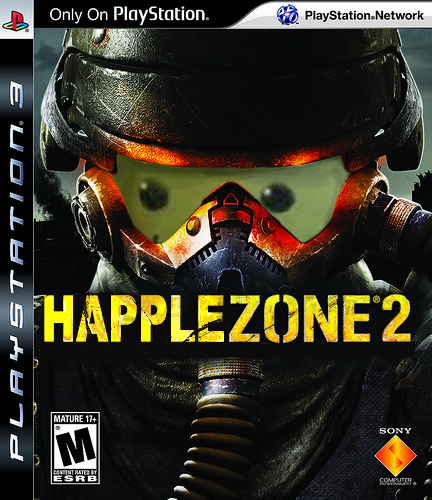Almost, but not quite, which is where multiplayer steps in and earns Killzone 2 its stars. There's an offline Skirmish mode that lets you practice against insidiously clever AI "bots," but the real money's online against other players. That mode's called Warzone, and it offers an evolving class-driven experience for up to 32 players, built around five game types that cycle as you play and swap win states on the fly.
"Search and Retrieve," which entails nabbing a tiny speaker spouting propaganda reflective of the carrier's faction, is basically Capture the Flag, while "Search and Destroy" has you deploying explosive charges at the opposition's base (or preventing them from doing the same to yours). "Bodycount" is team deathmatch, "Capture and Hold," is king of the hill, and "Assassination" designates random players on both sides as temporary point-based execution targets.
So there's variety, with dynamism besides. But the really clever part involves Warzone's six classes, which run the gamut from support to sabotage. Everyone starts with the basics: an assault rifle, a pistol, and a grenade. As you take out enemies and accomplish tasks, you accrue points, which buff your score and yield special badges and ribbons. The higher your score, the more stuff you can carry. With enough points, you can create squads that enhance your ability to communicate with squad mates even spawn near your squad leader.
The badges and ribbons add to the overall role-playing vibe with upgradeable class perks. Engineers, for example, can gain the ability to set automated turrets that target enemies, then rank up to add the option to repair ammunition dispensers, automated turrets, and mounted guns. Saboteurs, at the other end of the class schema, can acquire the ability to look like one of their opponents, then rank up and add the option to throw sticky proximity-detonated C4 charges.
Still not deep enough for you? Classes aren't just static columns, they can overlap. If you toil long enough and tally up the requisite essentials, you'll have the option to couple one class's abilities with another. Want a Medic who uses the Tactician's air support sentry bots to cover his curative ministrations? How about a (virtually) invisible Scout who employs the Saboteur's C4-laying ability to sneak behind enemy lines and plant incendiary surprises? The combinative role-playing possibilities are countless, the outcomes (which also iterate dependent on play styles) highly unpredictable, and the organic process itself completely fascinating to watch.
Which, speaking of watching, brings us full circle to Killzone 2's looks. Make no mistake, it's a looker. But so what? At some point the visual novelty wears off and you're left for posterity with a game that either worked, or didn't...or fell somewhere in limbo-land between.
Which makes it fortunate that Killzone 2 not only works, but in most cases excels. Even its mediocre campaign improves if you treat it as I suspect its developer's intended a series of pitched battles designed to showcase an AI that's at worst entirely competent, and at best, entirely remarkable.



